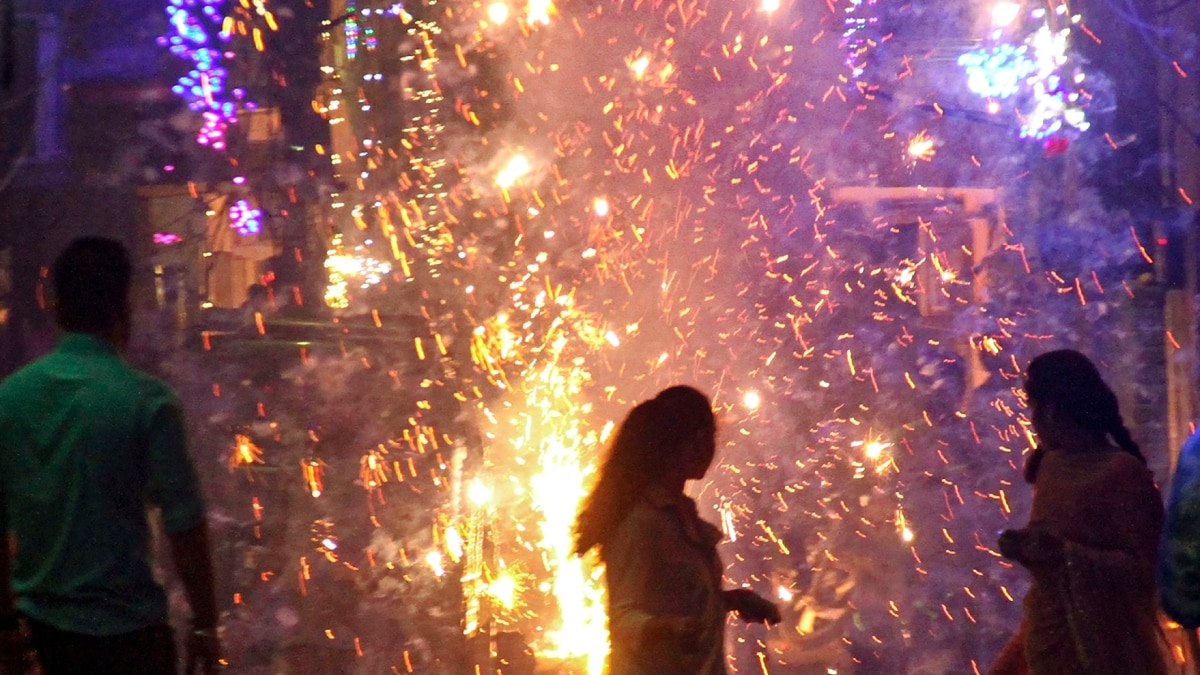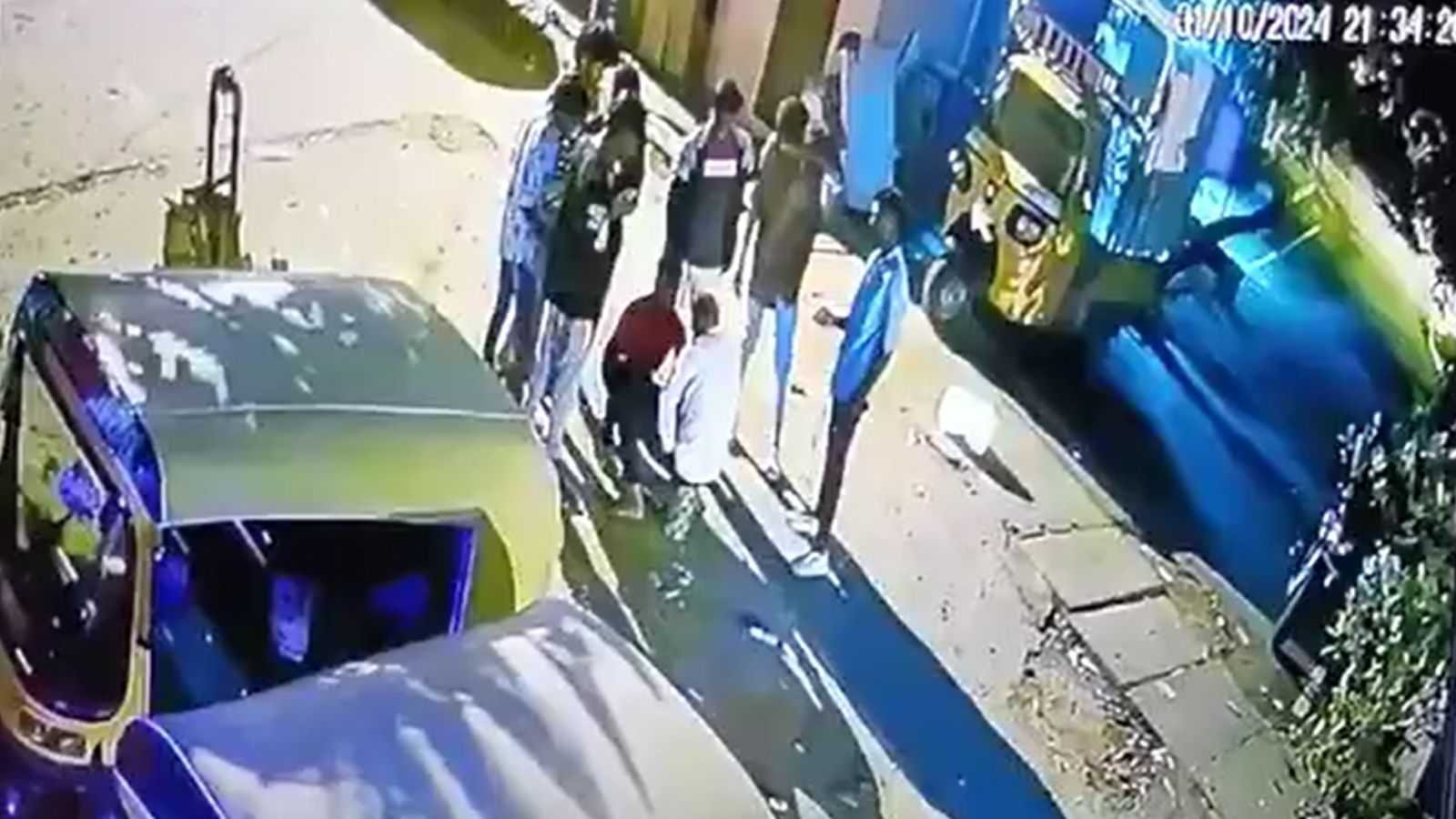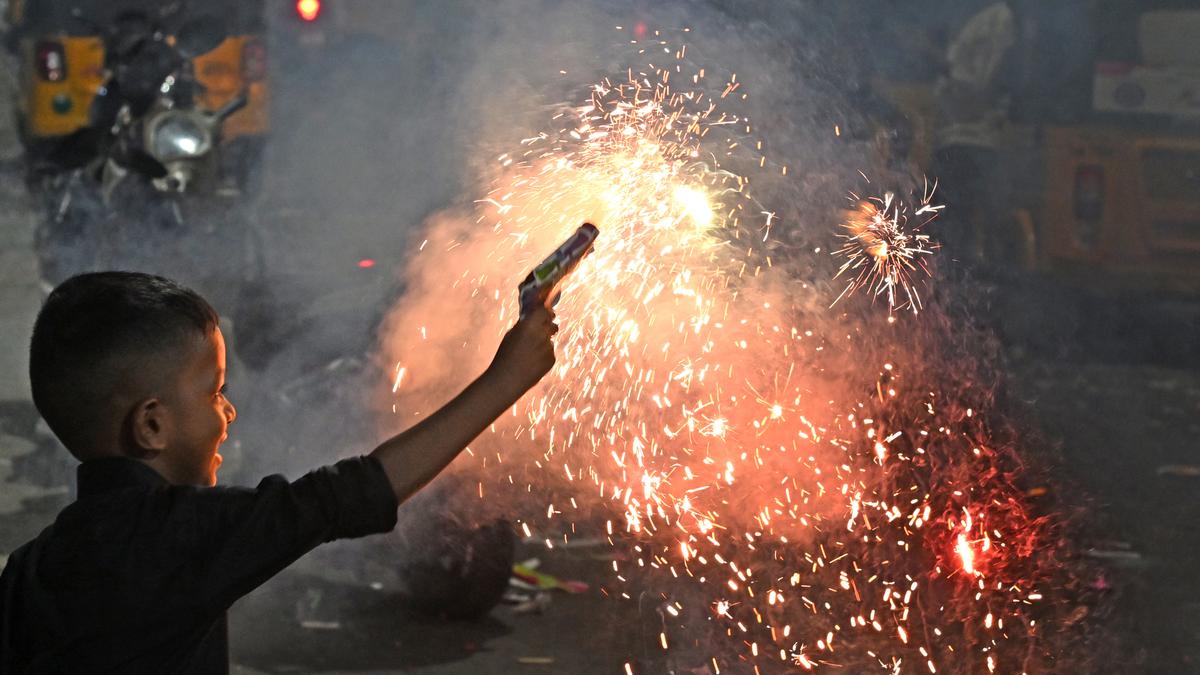Bengaluru witnessed a distressing surge in firecracker-related accidents on Tuesday, with over 75 people sustaining injuries of varying severity. The incidents, which occurred across residential neighborhoods, commercial areas, and public spaces, coincided with Deepavali celebrations, when the use of firecrackers peaks. Medical authorities reported that most injuries involved burns, cuts, and eye trauma, highlighting the dangers of unregulated and careless firecracker use during the festive season. Emergency departments across the city were overwhelmed, treating patients ranging from children to senior citizens affected by mishandled fireworks.
Authorities have noted that a majority of firecracker-related injuries occurred due to negligence or lack of supervision. Many cases involved young adults or children attempting to light fireworks without proper guidance, often resulting in hand and facial burns. Officials emphasize that parental supervision, adherence to instructions on firecracker packaging, and the use of safety gloves and eye protection can significantly reduce the risk of accidents during the festival.
The Karnataka Fire and Emergency Services have highlighted the importance of spatial awareness while handling fireworks. Igniting firecrackers in congested areas, near flammable materials, or inside homes has been identified as a major cause of severe injuries. Authorities are advising residents to select open areas, maintain safe distances from others, and avoid overcrowding during celebrations to minimize the potential for accidents and secondary hazards such as fires.
In addition to physical injuries, healthcare professionals have reported cases of psychological trauma, particularly among children who witnessed or were involved in firecracker accidents. The sudden explosions, loud noises, and sight of injured peers can have lasting mental health effects. Psychologists and counselors are working alongside medical teams to provide immediate support and coping strategies for affected individuals, emphasizing the need for holistic care following such incidents.

Hospital administrators have noted that burn units and emergency rooms faced logistical challenges due to the volume of patients on Tuesday. To manage the sudden surge, hospitals coordinated with nearby medical centers to share resources, including staff, beds, and medical supplies. This collaborative approach was critical in providing timely treatment, particularly for severe cases requiring specialized care such as skin grafts, wound management, and ophthalmological attention.
Public health authorities have also highlighted the role of community education in reducing firecracker-related injuries. Campaigns conducted in schools, residential associations, and social media platforms stress safe practices, emergency preparedness, and awareness of legal restrictions on firecracker use. These initiatives aim to create a culture of safety and responsible celebration, complementing enforcement efforts by police and civic authorities.
The Karnataka State Pollution Control Board (KSPCB) has linked the spike in injuries to elevated pollution levels caused by firecrackers. Smoke and particulate matter contribute to reduced visibility, irritate eyes and respiratory tracts, and increase the likelihood of accidents. Authorities urge residents to consider eco-friendly alternatives, such as digital or symbolic celebrations, to reduce both environmental and personal health risks during the festive season.
Legal enforcement remains a key component of managing firecracker-related risks. Police departments across Bengaluru have issued warnings and, in some cases, filed complaints against the sale of unlicensed or substandard firecrackers. Stricter enforcement of safety regulations, combined with public cooperation, is expected to prevent future incidents and ensure that Deepavali celebrations can proceed without overwhelming healthcare infrastructure.
Finally, the large number of injuries on Deepavali Tuesday serves as a stark reminder of the dual responsibility shared by authorities and citizens. While regulatory oversight, emergency preparedness, and hospital readiness are crucial, individual behavior—including supervision, adherence to safety guidelines, and responsible use of fireworks—plays an equally important role. Coordinated efforts can significantly reduce casualties, allowing the festival to be celebrated safely while preserving its cultural and social significance.

The majority of the accidents occurred during the evening hours, when firecracker activity is at its peak. Residents reported chaotic scenes as fireworks exploded in close proximity to crowds, often without adequate safety measures. Hospital sources noted that while minor injuries were the most common, several cases required surgical intervention and specialized care in burn units. Authorities have urged the public to exercise extreme caution and follow prescribed safety guidelines while handling fireworks.
Emergency Response and Hospital Preparedness: Firecracker
Bengaluru’s municipal and health authorities were forced to activate emergency protocols to manage the sudden influx of patients. Ambulances were dispatched rapidly, and hospitals extended their operational hours to accommodate the surge. Burns units and trauma centers saw a significant increase in patients, prompting authorities to request additional medical staff and supplies. Hospital officials emphasized the need for immediate first aid, including cooling burns, dressing wounds, and assessing eye injuries to prevent long-term complications.
City police and fire department teams were deployed to accident-prone neighborhoods to respond quickly to emergencies and enforce safety regulations. Reports indicated that many incidents were linked to illegal or unsafe fireworks sold without proper quality certification. Authorities have cautioned against purchasing uncertified firecrackers and encouraged residents to attend organized community displays rather than engaging in individual pyrotechnic activities.
The spike in injuries has reignited discussions on firecracker safety, particularly for children and young adults. Pediatric cases were notably high, with several children suffering hand burns and eye injuries due to improper handling. Parents and guardians are being advised to supervise all firecracker activities, provide protective gear, and ensure that fireworks are ignited in open spaces away from combustible materials and crowds.
Medical experts have also highlighted the risk of inhalation injuries and respiratory distress caused by smoke and particulate matter from firecrackers. Individuals with pre-existing respiratory conditions, including asthma and chronic bronchitis, are particularly vulnerable. Authorities have recommended that such individuals avoid outdoor exposure during peak firecracker hours and use masks or protective coverings if venturing outside.
Social and public health organizations have emphasized community responsibility in preventing accidents. Neighborhood groups and local volunteers have been organizing awareness campaigns, distributing safety guidelines, and monitoring public firecracker use. Public service announcements stress the importance of maintaining safe distances, avoiding overcrowded areas, and adhering to local regulations to reduce the risk of accidents.
The Karnataka State Pollution Control Board (KSPCB) has also been monitoring air quality in tandem with the firecracker-related accidents. High levels of smoke and particulate matter not only exacerbate respiratory risks but also reduce visibility, contributing to accidental injuries. Authorities are urging residents to combine firecracker safety with environmental responsibility, promoting eco-friendly celebrations that minimize health hazards.

Authorities have warned that legal action may be taken against individuals selling illegal or low-quality firecrackers and against those responsible for accidents caused by negligence. Police have increased patrolling in key areas and are coordinating with municipal teams to ensure that celebrations remain within safety and legal limits. The aim is to prevent further casualties while allowing citizens to enjoy the festive season responsibly.
In addition to immediate medical care, counseling services are being offered to victims and their families. Traumatic experiences from burn and injury accidents can have lasting psychological effects, and mental health support is being recognized as an essential component of post-accident recovery. Hospitals and NGOs are coordinating to provide comprehensive care for both physical and emotional well-being.
The surge in firecracker-related injuries underscores the ongoing need for public awareness and regulatory enforcement. Authorities, healthcare providers, and community groups are emphasizing that adherence to safety guidelines, proper supervision, and responsible behavior are crucial to preventing accidents. The Deepavali season, while culturally significant, poses serious risks if safety precautions are neglected, highlighting the need for collective action to protect lives and promote safe celebrations.
Officials have reiterated that while the majority of injuries were minor, the sheer volume of incidents reflects a systemic need for better public education and stricter safety enforcement. Measures such as organized community displays, protective gear, and proper disposal of used firecrackers are being promoted to reduce the likelihood of injuries in the future. The city’s response aims to balance the cultural celebration with public safety imperatives.
Medical teams are also advising citizens to maintain emergency kits at home, including burn dressings, antiseptics, and eyewash solutions, to manage minor accidents immediately. Rapid response in the initial moments following a firecracker-related injury can significantly reduce complications and improve recovery outcomes. Authorities encourage residents to familiarize themselves with basic first aid procedures to mitigate harm effectively.
Social media and local media channels have been actively spreading safety messages, including videos demonstrating proper firecracker handling, safe distances, and protective measures. Citizens are urged to share and follow these messages to raise community-wide awareness, especially among children and young adults who are most likely to engage directly with fireworks during the festival.
The spike in injuries in Bengaluru serves as a reminder of the potential dangers inherent in traditional celebrations when safety protocols are ignored. By integrating education, regulation, and community engagement, authorities aim to reduce accidents and ensure that festivities can be enjoyed without compromising health or safety. The incidents have sparked conversations among citizens, policymakers, and public health experts about the need for a sustainable balance between cultural practices and public welfare.
Looking ahead, city officials have pledged to review the management of festival-related activities, including firecracker sales, monitoring, and public awareness campaigns. Plans for next year include stricter certification of firecrackers, designated safe zones for public displays, and enhanced coordination among police, medical, and civic authorities to prevent recurrence of large-scale injuries during Deepavali and similar festivals.
Follow: Karnataka Government
Also read: Home | Channel 6 Network – Latest News, Breaking Updates: Politics, Business, Tech & More

